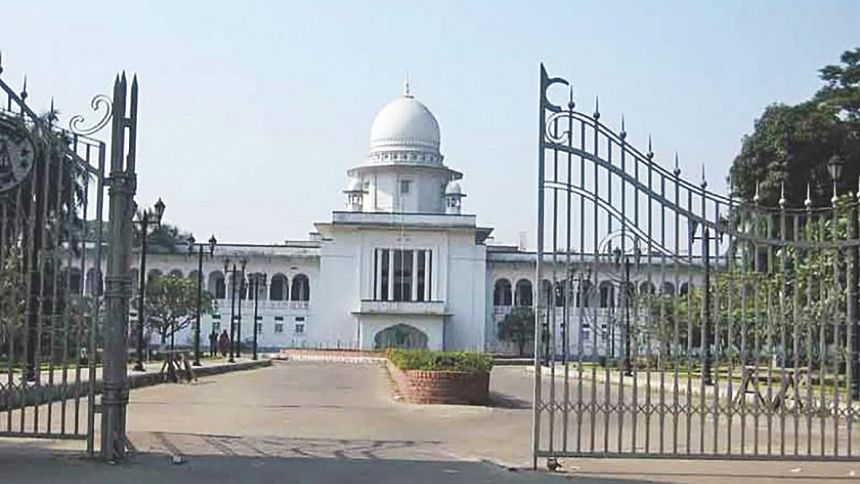ARTICLE 7B,OR THE DEATH OF THE BASIC FEATURE DOCTRINE?

In 2011, the parliament by the 15th constitutional amendment incorporated Article 7B in the Constitution. Article 7B provides that the preamble, Part nos. I, II & III, Article 150,and all other provisions that relate to the basic structures of the Constitution are not amendable by way of insertion, modification, substitution, repeal or by any other means.[It should be pointed out that the English translation of Article 7B is different from the Bengali text. The Bengali text of Article 7B suggests that Part nos. I, II & III and Article 150 of the Constitution are unamendable because they constitute basic features.In simple term, Article 7B prohibits amendments to the provisions which could be identified with the basic features of the Constitution. At first glance, Article 7B makes as if to endorse legislative recognition of the basic feature doctrine as spelt out in Anwar Hossain Chowdhury & Others v Bangladesh, 1989 (hereinafter 'the 8th Amendment Case').This essay, however, argues that Article 7B in fact makes a significant departure from the way the basic feature doctrine was understood and formalised in the 8th Amendment Case.
As may be recalled, the majority of judges in the 8th Amendment Case did not rule against amendment to the constitutional provisions in an unconditional manner. They rather maintained that amendments to the constitutional provisions are permissible so far as they do not impinge on the basic features of the Constitution (see Kawser Ahmed, 'What is Actually the Basic Feature Doctrine?', The Daily Star, 05 June 2018, p.15). In contrast to the ratio of the 8th Amendment Case, Article 7B absolutely prohibited any amendment to the constitutional provisions which are identified as basic features in any manner whatsoever. In the 8th Amendment Case, the majority of judges viewed basic features as the core ideological notions of the Constitution (Ibid).Quite the contrary, Article 7B has transposed the basic features from the sphere of core ideological notions to the text of the Constitution. In effect, Article 7B's envisioned approach, if termed 'the basic provision doctrine', would perhaps make more sense.
It is worth mentioning that while Article 7B has taken away from the parliament much of its power to amend the Constitution; it has left plenty of latitude for the judiciary to say what the basic features are or which provisions the basic features are to be identified with. The reason is Article 7B neither by name declares what the basic features are, nor does it provide a list of constitutional provisions that relate to these basic features (Save Part nos. I, II & III and article 150 of the Constitution).
Not only that, Article 7B has introduced significant changes in the method of scrutiny to determine validity of a constitutional amendment. The basic feature doctrine laid down a substantive compatibility test for amendments to be incorporated into the Constitution. Now in view of Article 7B, any amendments to Part nos. I, II & III, Article 150 as well as provisions relating to basic features of the Constitution will be void simply for the reason that the parliament will exceed its power if passes such amendments. Hence, the court's task has come down to finding out whether an amendment in question has amended somehow any of those constitutional provisions placed under the protection of Article 7B. As a result, Article 7B, unlike the basic feature doctrine, relieves of the need for any substantive compatibility test of a constitutional amendment coming within its purview. (Of course, article 7B does not take away the power of the court to review constitutional amendments anterior to it on the basis of the basic feature doctrine).
Ironically, Article 7B (could now be termed 'the clogger clause') itself being a constitutional amendment seeks to shut the door to subsequent amendments despite the fact that it fails to make any ostensible claim to superiority over other amendments in any respect. It has modified operation of Article 26(3) in a noticeably interesting way. Article 26(3) excepted constitutional amendments from judicial review even if they are inconsistent with Part-III of the Constitution. Since Part nos. I, II and III cannot be amended anymore in virtue of Article 7B, the application of Article 26(3), so far as it relates to these Parts has reduced to redundancy. Moreover, since Article 26(3) itself is also included in Part-III, the same cannot also be deleted or modified by way of amendment. From political point of view, Article 7B constitutes a clog on the Awami League government's agenda to return to 1972 version of the Constitution.
Article 7B has added new perspectives to judicial review of constitutional amendment in Bangladesh. As a result, judicial review of any constitutional amendments enacted in post-Article 7B period will require a fresh jurisprudential approach.
The writer is an Advocate, Supreme Court of Bangladesh.

 For all latest news, follow The Daily Star's Google News channel.
For all latest news, follow The Daily Star's Google News channel. 



Comments